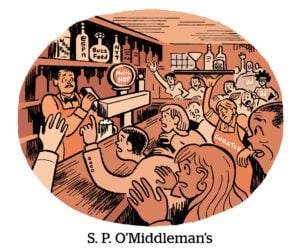PubMatic’s latest earnings point to lingering softness in the ad market. But the company is betting on a bright future for CTV, retail media and supply-path optimization (SPO).
On Wednesday, the SSP reported a 1% YOY decline in revenue for a total of $63.7 million. That was good enough to beat investor expectations.
Though the company sold more display inventory than expected, that revenue – which accounts for 67% of its total purse – was down 4% YOY, CFO Steve Pantelick said. CTV revenue was also down 4% YOY. Pantelick blamed both decreases on soft demand in July.
With last year’s lingering slide in ad spend, PubMatic sees itself playing the long game by innovating in CTV and retail media, leaning into the SPO trend and adopting cookieless tech in anticipation of the day advertising demand returns, CEO Rajeev Goel told investors.
SPO driving CTV
Some of those investments are already transforming PubMatic’s platform: SPO deals are now 45% of its business, and omnichannel video is 33%.
PubMatic launched Activate, its direct CTV and video buying solution that cuts out DSPs, in May. It’s already been used for 50 campaigns, Goel said, and it recently launched in the APAC region.
SPO opportunities like Activate are the most exciting growth opportunities in the market right now, Goel continued, because they are about “getting closer to buyers and capturing a greater share of their ad budgets in return for greater efficiency and control on their part.”
Activate is only compatible with private marketplace (PMP) and programmatic guaranteed deals, not open auction. PMP deals were up 10% this quarter, Goel said, although he didn’t address how much of that increase was due to Activate.
While omnichannel video revenue was down compared to last year, it was up 7% compared to Q2. And 252 publishers sold their CTV inventory through the company’s platform in Q3.
Yahoo’s effect on display
The demise of Yahoo’s SSP contributed to the dip on the display side.
In Q3, revenue from Yahoo’s owned and operated sites, which mostly comes from display inventory, represented 5% of PubMatic’s revenue, Pantelick said. But that inventory isn’t monetizing as effectively because Yahoo is in the process of migrating to a new tech stack, he said.
Excluding Yahoo, PubMatic’s revenue actually grew by a low single-digit percentage, he added.
When an investor followed up on Yahoo’s impact on PubMatic’s revenue, Goel said it is a growth opportunity that PubMatic considers to be a close partner, “but there’s work to do over the next several quarters.”
Post-cookie plans
Convert, the company’s retail media solution for serving product listing ads, is also a growth opportunity, but it’s early days for that solution and retail media overall, Goel said. Still, Convert has grown its client base by 40% since it launched in July.
The death of the third-party cookie is also an opportunity for PubMatic to grow its market share, Goel said. It has integrated 29 alternative IDs, and only a quarter of impressions served on its platform don’t have an alternative targeting signal other than a cookie attached, he said. It’s also testing Google’s Privacy Sandbox.
PubMatic isn’t stressing about the increased competition between DSPs and SSPs, according to Goel.
Asked by an investor whether the company would consider working with The Trade Desk on its OpenPath direct-to-publisher initiative, he didn’t rule it out. Instead, he referred to TTD as a “terrific long-term partner” and pointed to PubMatic’s integration of its UID2.0 as a sign the two can work together.
In sum, PubMatic’s strategy is to read the tea leaves on where the industry is heading and adjust accordingly, Goel said. “Our intent is to be really well positioned with the fastest growing segments when we come out of this downturn, which, hopefully, we’ll start to see in the next couple of quarters.”

















